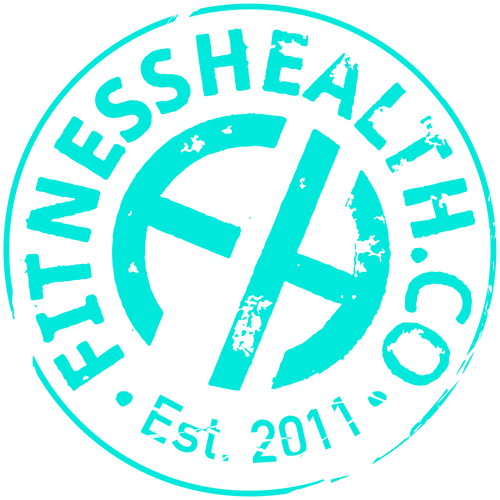Losing fat without sacrificing muscle is a common goal for fitness enthusiasts and those on a weight loss journey. Striking the right balance between diet and exercise is key to achieving this. In this guide, "How to Lose Fat Without Losing Muscle: Weight Loss Tips," we'll explore effective strategies to help you maintain or even build muscle mass while shedding unwanted fat. From nutritional advice to workout plans, you'll learn how to fine-tune your routine to optimize fat loss while preserving muscle, ensuring you achieve a lean, toned physique without compromising your strength and health. Let's dive into the world of smart weight loss and discover how you can achieve your fitness goals in a healthy, sustainable way.
Simple process to be followed
Strength training - get enough rest - adequate protein intake.
Expert recommendations for effective weight loss.
When embarking on a weight loss journey, it's essential to pay close attention to your protein intake. Protein plays a vital role in preserving muscle mass while you shed pounds, ensuring that your body loses fat and not muscle. Aim to include 20-40 grams of protein in each meal, starting with breakfast, to support your body's needs throughout the day.
There's a diverse array of protein-rich foods to choose from, catering to various tastes and dietary preferences. Dairy products like milk and yogurt are excellent options, offering both protein and essential nutrients. Eggs, a versatile and convenient choice, are another great source of high-quality protein.
For those who enjoy seafood, fish and other marine foods not only provide protein but also essential omega-3 fatty acids. Meat, whether it's poultry, beef, or other types, is a traditional protein staple, rich in vital nutrients.
For vegetarians or those looking to diversify their protein sources, tempeh is a fantastic plant-based option. Made from fermented soybeans, tempeh is not only rich in protein but also offers other health benefits, including probiotics and a range of vitamins and minerals.
Incorporating these protein sources into your diet can help ensure that your weight loss is healthy, sustainable, and effective, supporting your body’s needs while you work towards your goals.

"Losing fat without losing muscle can be a challenging but achievable goal."
Embarking on a fitness journey can be both exciting and challenging. To help you navigate this path, we've compiled a selection of weight loss tips that are designed to guide and support you every step of the way. These tips are not just about shedding pounds; they're about embracing a healthier lifestyle, understanding your body's needs, and making choices that lead to lasting change. So, gear up for a transformative experience that goes beyond the scale and dive into these insights that will help you on your journey to a fitter, happier you. Let's get started!
Calorie deficit: Creating a calorie deficit is essential for fat loss. This means consuming fewer calories than you burn. However, it's important to balance this deficit with calorie intake carefully to avoid losing muscle mass. Aim for a moderate calorie deficit of around 500-750 calories per day for sustainable weight loss.
Strength training: Incorporating strength training into your routine is crucial for preserving muscle mass while losing fat. Additionally, lifting heavy weights with proper form can help stimulate muscle growth and maintain your muscle mass.
High-protein diet: Protein plays a vital role in muscle preservation during weight loss. Aim to consume an adequate amount of protein to support muscle repair and growth. Include lean sources of protein such as chicken, turkey, fish, tofu, beans, and Greek yogurt in your meals.
Balanced macros: While focusing on fat loss, it's important to maintain a balanced macronutrient intake. Include a reasonable amount of carbohydrates and healthy fats in your diet to provide energy and support your overall health. Opt for complex carbohydrates like whole grains, fruits, and vegetables, and choose healthy fats from sources like avocados, nuts, and olive oil.
Regular cardio exercise: Incorporating cardio exercises like jogging, cycling, swimming, or HIIT workouts into your routine can help burn calories and promote fat loss. However, be mindful not to overdo it, as excessive cardio can lead to muscle loss. Aim for a balance between cardio and strength training exercises.
Get enough rest and recovery: Rest and recovery are essential for muscle growth and overall well-being. Ensure you're getting enough sleep, as it plays a crucial role in hormone regulation and muscle repair. Additionally, give your muscles time to recover between workouts to prevent overtraining and promote muscle preservation.
Stay consistent and patient: Losing fat while maintaining muscle takes time and consistency. Avoid crash diets or extreme measures that can harm your health and muscle mass. Focus on sustainable changes to your lifestyle, including a balanced diet and regular exercise, and be patient with your progress.

How to lose body fat and preserve muscle mass
On your quest to a leaner, stronger you, finding the right balance between losing body fat and maintaining muscle is crucial. To guide you through this journey, we've put together a collection of effective strategies tailored to help you achieve just that. These tactics aren't just about cutting calories or hitting the gym; they're about understanding the science of your body and applying smart, sustainable methods that work in harmony with your fitness goals. So, let's embark on this exciting path towards a more toned and sculpted physique, armed with the knowledge and tools you need to succeed. Ready to make your fitness dreams a reality? Let's dive in!
1. Avoid or limit processed foods: sugary beverages, and excessive amounts of added sugars and saturated fats.
2. Portion control: Pay attention to portion sizes and avoid overeating. Use smaller plates and bowls to help control your portion sizes and listen to your body's hunger and fullness cues.
3. Regular exercise and weight training: Incorporate a combination of cardiovascular exercise and strength training into your fitness routine. Cardiovascular exercises like running, cycling, or swimming help burn calories and fat, while strength training exercises build lean muscle mass, which increases your metabolism and helps burn more calories even at rest.
4. High-intensity interval training (HIIT): Incorporating HIIT workouts into your routine can be an effective way to burn body fat and lose weight. HIIT involves short bursts of intense exercise followed by periods of rest or lower-intensity exercise.
5. Stay hydrated: Drink plenty of water throughout the day to stay hydrated. It can also help curb hunger and promote a feeling of fullness.
6. Get enough sleep: Aim for 7-9 hours of quality sleep each night. Lack of sleep can disrupt your hormones and increase cravings for unhealthy foods.
7. Manage stress: Chronic stress can lead to weight gain and hinder fat loss. Find healthy ways to manage stress, such as practicing mindfulness, engaging in hobbies, or seeking support from friends and family.
8. Track your progress: Keep a journal or use a mobile app to track your food intake, exercise, and progress. This can help you stay accountable and make adjustments as needed.
Remember, losing body fat takes time and consistency. It's important to focus on overall health and make sustainable lifestyle changes rather than resorting to quick-fix solutions.
The importance of strength and lean mass cannot be overstated!
Strength and lean mass aren't just vital elements of fitness; they are cornerstones of overall health and well-being. Let's delve into why these components are so crucial. Their importance transcends mere physical appearance or athletic performance. Strength and lean mass contribute significantly to our body's functionality, resilience, and longevity. They play a pivotal role in everything from maintaining a healthy metabolism to ensuring joint stability, enhancing mobility, and even impacting mental health. Embracing their significance means understanding that a strong, well-muscled body isn't just about looking good – it's about nurturing a foundation of health that supports us through every stage of life. Let's explore the myriad of reasons why strength and lean mass truly matter.

Functional motion
Functional movement is at the heart of our daily life, and strength plays a pivotal role in how effectively we perform everyday tasks. From lifting groceries to carrying a child, or even ascending a flight of stairs, possessing adequate strength transforms these routine activities into effortless actions. More than just making these tasks easier, having good strength significantly lowers the risk of injury. It equips your body to handle the physical demands of daily life, ensuring you can move through your day not just with efficiency, but with confidence and safety. Let's appreciate how crucial strength is in empowering us to navigate our everyday world with grace and resilience.
Keep those bones in tip-top shape!
Bone health is a critical aspect of our overall well-being, and strength training plays an essential role in maintaining it. Engaging in exercises that promote the development of lean mass has a direct, positive impact on increasing bone density. This becomes increasingly important as we age. Over time, our bones naturally tend to lose density, making us more susceptible to fractures and conditions like osteoporosis. By building and maintaining lean muscle mass through regular strength training, we provide our bones with the support they need to stay strong and resilient. This proactive approach to fitness not only enhances our muscular system but also lays a solid foundation for robust bone health, safeguarding our mobility and quality of life in the years to come.
Healthy Metabolism
Metabolic health is deeply influenced by the composition of our bodies, particularly the balance of lean muscle mass. Lean muscle isn't just a marker of strength and fitness; it's a powerhouse when it comes to boosting our metabolism. This is because muscle tissue is metabolically active, demanding more calories to maintain itself compared to fat tissue. As a result, having a higher proportion of lean muscle leads to an increased rate of fat burning, even when at rest. This heightened resting metabolic rate is a game-changer in managing weight and enhancing overall metabolic health. It's a virtuous cycle: the more lean muscle you have, the more efficiently your body can burn calories and maintain a healthy metabolism. Embracing strength training to build lean muscle is not just about sculpting a fit body; it's about kindling the inner furnace of your metabolism for better health and vitality.

Injury prevention
Injury prevention is a crucial benefit of strength training, often overlooked in the pursuit of fitness goals. When you engage in strength training, you're not just building muscle; you're also fortifying tendons and ligaments. This makes them more resilient and less susceptible to injuries. Strong muscles play a key role in supporting and stabilizing our joints. By building robust muscles around these critical areas, you significantly reduce the risk of common injuries such as strains, sprains, and joint-related issues. This protective aspect of strength training is essential for anyone looking to maintain an active and injury-free lifestyle. Whether you're an athlete or someone who enjoys a daily jog, reinforcing your body's natural support system through strength training is a smart strategy for long-term health and physical well-being.

Body composition
Body composition undergoes a remarkable transformation through strength training and the increase of lean mass. This process isn't just about muscle growth; it's about altering the very fabric of your body. By reducing body fat percentage and increasing muscle mass, you achieve a more favorable balance that significantly enhances your overall physique. As your muscle mass expands, it not only improves your body's shape and definition but also contributes to a more toned and sculpted appearance. Muscle is denser and takes up less space than fat, meaning that even if your weight remains the same, your body can look markedly different - leaner and more defined. This shift in body composition is a testament to the power of strength training, offering visible results that go beyond the numbers on a scale and reflect in the mirror as a stronger, healthier you.

Aging Gracefully
Doing more cardio
Another way to lose weight and gain muscle, perform high-intensity cardio for a minimum of 150 minutes each week. Cardio exercises are a vital component of maintaining fitness and overall health. Engaging in regular cardio workouts can have numerous benefits for your body and mind. Cardio exercises, also known as aerobic exercises, help to strengthen your heart and lungs, improve circulation, and boost your overall cardiovascular health. Here are some key points to consider when incorporating cardio into your fitness routine:
Choose activities you enjoy: Find cardio exercises that you enjoy doing, as this will make it easier to stick to a regular aerobic exercise routine. Whether it's running, cycling, swimming, dancing, or participating in group fitness classes, the key is to find activities that you find fun and engaging.
Set goals: Establish specific goals to stay motivated and monitor your progress. For example, you can aim to run a certain distance in a specific time frame or gradually increase the duration of your cardio sessions.
Start slow and gradually increase intensity: If you're just starting out, it's important to ease into cardio workouts gradually. Begin with shorter durations and lower intensity levels, then gradually increase both as your fitness level improves. This approach helps prevent injuries and allows your body to adapt to the demands of cardio exercise.
Mix up your routines: Incorporate a variety of cardio exercises into your routine to keep things interesting and avoid boredom. This could include alternating between different activities or trying new workout formats such as interval training, HIIT (high-intensity interval training), or circuit training.
Monitor your heart rate: Use a heart rate monitor to ensure that you're working within your target heart rate zone. This zone is typically around 50-85% of your maximum heart rate, depending on your fitness level and goals. Monitoring your heart rate can help you optimize your workouts and ensure you're getting the most out of your cardio sessions.
Include both steady-state and high-intensity workouts: Mix up your cardio routine with both steady-state exercises, such as jogging or cycling at a moderate pace, and high-intensity workouts. High-intensity exercises, like sprints or interval training, can help maximize calorie burn and improve cardiovascular fitness in a shorter amount of time.
Don't forget about recovery: Allow your body sufficient time to recover between intense cardio workouts. Rest days and active recovery sessions, such as light walking or stretching, are essential for preventing overuse injuries and optimizing performance.

Low-intensity fasted cardio
Low-intensity fasted cardio refers to performing cardiovascular exercise at a low intensity level, such as walking or light jogging, on an empty stomach in the morning before consuming any food. This approach resistance exercise has gained popularity in the fitness community due to its potential benefits for fat loss and overall health.
When you perform cardio exercises in a fasted state, your body relies more on stored fat as a fuel source since glycogen (carbohydrate) stores are depleted overnight. This can potentially lead to increased fat oxidation and help in achieving your weight loss goals.
Here are some tips to optimize your low intensity fasted cardio routine:
Start Slowly: If you are new to fasted cardio or exercise in general, start with shorter durations and gradually increase the intensity and duration as your fitness level improves. It is important to listen to your body and avoid pushing yourself too hard, especially in a fasted state.
Stay Hydrated: Even though you might not be eating before your cardio session, it is crucial to stay hydrated. Drink water before and during your workout to maintain proper hydration levels.
Warm-up: Prior to starting your low intensity cardio, perform a brief warm-up to prepare your muscles and joints for exercise. This can include dynamic stretching, light movements, or a short walk.
Monitor Intensity: Keep the intensity low to moderate during fasted cardio sessions. Aim for a heart rate that allows you to maintain a conversation without gasping for breath. This ensures that you are within the fat-burning zone and not pushing your body into anaerobic exercise.
Refuel Post-Workout: After completing your fasted cardio session, it is important to refuel your body with a balanced meal or snack containing carbohydrates, protein, and healthy fats. This helps replenish glycogen stores and supports muscle recovery.
Consider Individual Differences: It's worth noting that everyone's body responds differently to various exercise and nutrition strategies. While some individuals may find success with low intensity fasted cardio, others may perform better with different approaches. It's essential to listen to your body and make adjustments based on your own preferences and goals.
Remember, maintaining a balanced diet, engaging in regular exercise, and considering other aspects of overall health, such as strength training and flexibility work, are equally important for achieving optimal fitness and health outcomes. Consulting with a qualified fitness professional or healthcare provider can provide personalized guidance based on your specific needs and goals.









